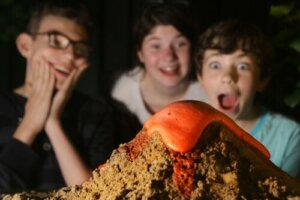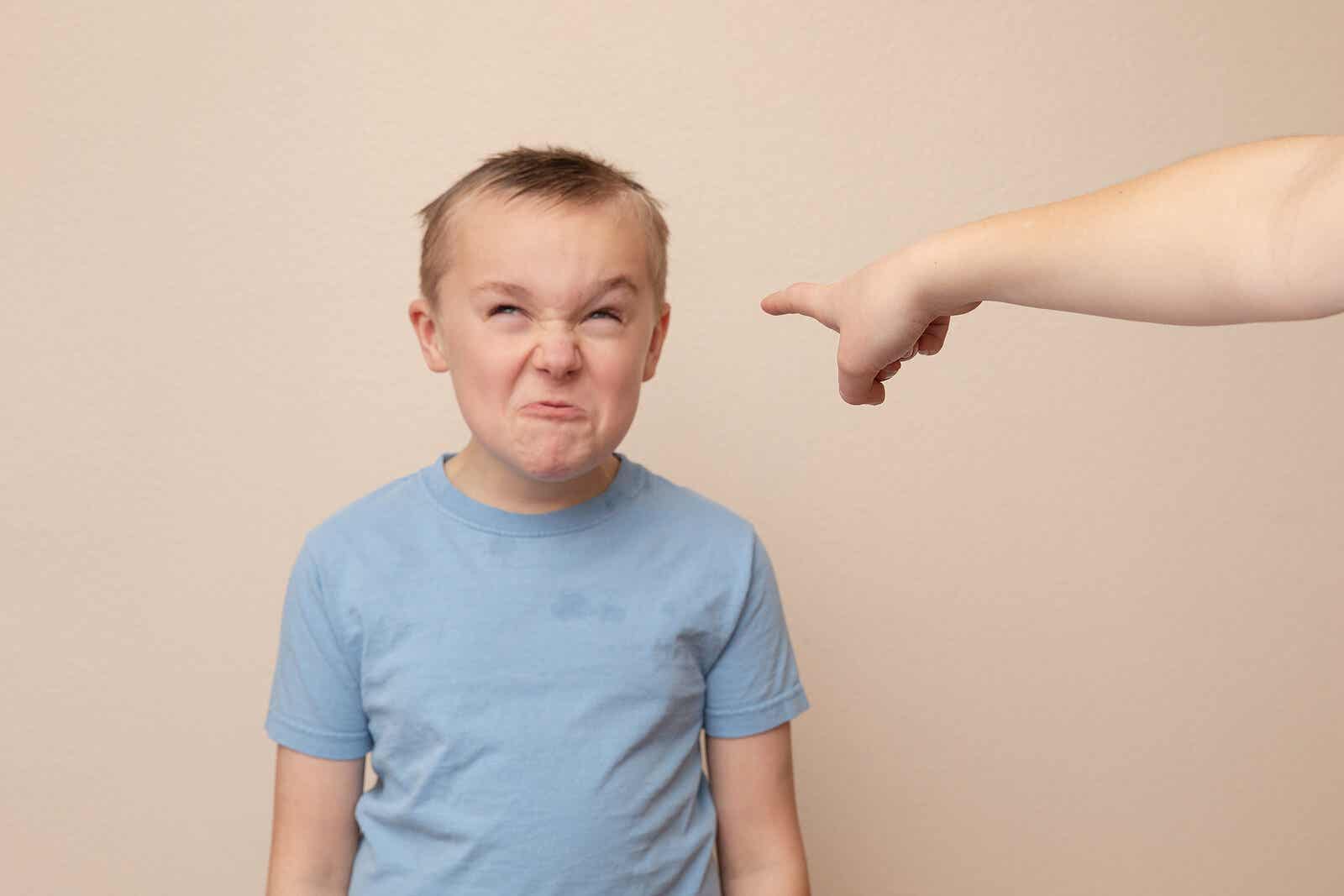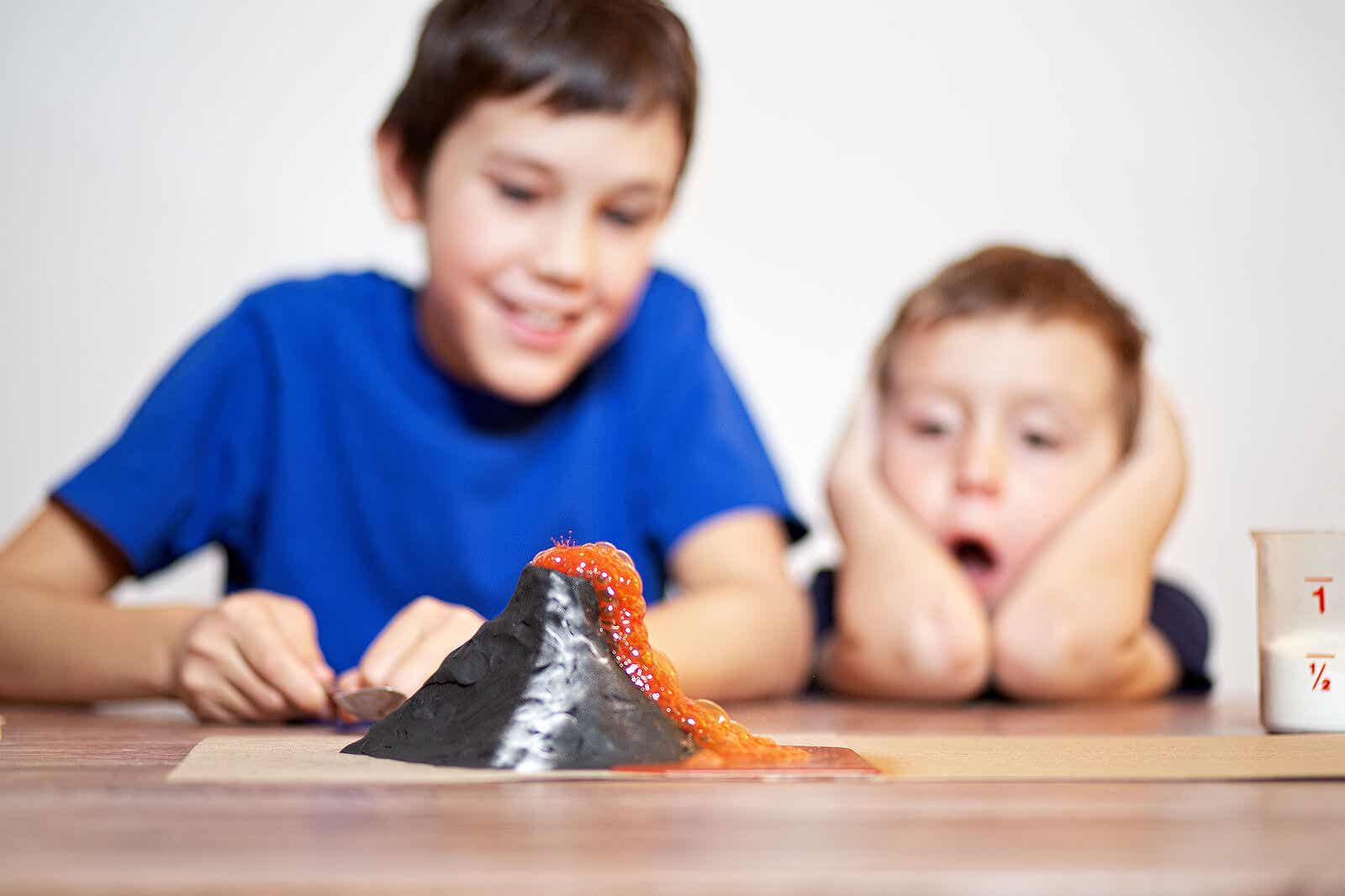The Volcano Technique to Work on Self-Control


Written and verified by the psychologist Ana Couñago
The volcano technique is very useful when it comes to working on self-control in children. Its effectiveness lies in its simplicity. Children, even the youngest of them, understand the simile between the eruption of a volcano and the uncontrolled anger that they themselves sometimes experience.
This psycho-pedagogical technique can be put into practice in both family and school contexts, two fundamental environments for the correct development of children.
Do you want to know what the volcano technique consists of and how to apply it with your children? In the following paragraphs, we’ll tell you everything you need to know about this topic.
The volcano technique to work on self-control
The volcano technique consists of teaching the child how anger occurs and how to avoid losing control in these situations. In order for them to understand it in an easy and simple way, we use the image of a volcano.

In other words, this technique explains that when you get angry, it’s like a volcano about to erupt, and you have to learn to control the explosion and keep the lava from spilling out.
“Self-control is strength. Right thought is mastery. Calmness is power.”
-James Allen-
Steps to apply this self-control technique
The first thing to do to correctly apply the volcano technique is to ask the child to draw a volcano on a piece of paper. If you have more time and want to make the activity more dynamic, you can also make your own model of a volcano. Then, the little one must answer three questions and write the relevant answers next to the volcano:
- “What makes you angry?“: The child must identify and express what situations make them feel angry. For
- , not being able to watch TV, someone taking their toys, being scolded, etc.
- “What happens to you when you get angry?“: The child should reflect on and be aware of what their behaviors are when they get angry. For example, yelling, hitting, insulting, throwing objects, crying, etc.
- “What can you do to avoid losing control?”: To answer this question, the help of an adult is usually necessary. The intention is for the child to learn that the inappropriate behaviors they engage in when angry can be replaced by more appropriate ones. For example, the child can be advised to count to 10 and to act when they’re in a calmer state; when they have a conflict, to go to a responsible adult to help them solve it; to apply certain relaxation techniques, etc.
After answering these questions, it’s time to put them into practice. In other words, the child should take their knowledge into account the next time they experience anger or a tantrum.
At first, when these situations of irascibility arise, it’s best for an adult to remind the child of the volcano technique and what alternatives they can choose instead of blowing up. With the passing of time, the child will learn to do this autonomously and will have acquired the capacity for self-control.

“Emotional self-control is the result of hard work, not an inherent skill.”
-Travis Bradberry-
The benefits of using the volcano technique
Children need to know that getting angry in certain situations is normal, even necessary. It’s not an emotion they need to repress, but it’s important to control those inappropriate behaviors that can occur because of anger.
Children should have sufficient resources and tools to act appropriately. And the volcano technique is ideal for teaching them alternative ways to act when experiencing anger.
Finally, it’s important to note that kids aren’t born with this ability. In other words, they’re not born with the capacity for self-control, but have to work on it over time. For this reason, it’s important to learn, from the first years of life, to manage one’s own emotions and behaviors through playful and educational techniques such as the one we’ve explained in this article.
The volcano technique is very useful when it comes to working on self-control in children. Its effectiveness lies in its simplicity. Children, even the youngest of them, understand the simile between the eruption of a volcano and the uncontrolled anger that they themselves sometimes experience.
This psycho-pedagogical technique can be put into practice in both family and school contexts, two fundamental environments for the correct development of children.
Do you want to know what the volcano technique consists of and how to apply it with your children? In the following paragraphs, we’ll tell you everything you need to know about this topic.
The volcano technique to work on self-control
The volcano technique consists of teaching the child how anger occurs and how to avoid losing control in these situations. In order for them to understand it in an easy and simple way, we use the image of a volcano.

In other words, this technique explains that when you get angry, it’s like a volcano about to erupt, and you have to learn to control the explosion and keep the lava from spilling out.
“Self-control is strength. Right thought is mastery. Calmness is power.”
-James Allen-
Steps to apply this self-control technique
The first thing to do to correctly apply the volcano technique is to ask the child to draw a volcano on a piece of paper. If you have more time and want to make the activity more dynamic, you can also make your own model of a volcano. Then, the little one must answer three questions and write the relevant answers next to the volcano:
- “What makes you angry?“: The child must identify and express what situations make them feel angry. For
- , not being able to watch TV, someone taking their toys, being scolded, etc.
- “What happens to you when you get angry?“: The child should reflect on and be aware of what their behaviors are when they get angry. For example, yelling, hitting, insulting, throwing objects, crying, etc.
- “What can you do to avoid losing control?”: To answer this question, the help of an adult is usually necessary. The intention is for the child to learn that the inappropriate behaviors they engage in when angry can be replaced by more appropriate ones. For example, the child can be advised to count to 10 and to act when they’re in a calmer state; when they have a conflict, to go to a responsible adult to help them solve it; to apply certain relaxation techniques, etc.
After answering these questions, it’s time to put them into practice. In other words, the child should take their knowledge into account the next time they experience anger or a tantrum.
At first, when these situations of irascibility arise, it’s best for an adult to remind the child of the volcano technique and what alternatives they can choose instead of blowing up. With the passing of time, the child will learn to do this autonomously and will have acquired the capacity for self-control.

“Emotional self-control is the result of hard work, not an inherent skill.”
-Travis Bradberry-
The benefits of using the volcano technique
Children need to know that getting angry in certain situations is normal, even necessary. It’s not an emotion they need to repress, but it’s important to control those inappropriate behaviors that can occur because of anger.
Children should have sufficient resources and tools to act appropriately. And the volcano technique is ideal for teaching them alternative ways to act when experiencing anger.
Finally, it’s important to note that kids aren’t born with this ability. In other words, they’re not born with the capacity for self-control, but have to work on it over time. For this reason, it’s important to learn, from the first years of life, to manage one’s own emotions and behaviors through playful and educational techniques such as the one we’ve explained in this article.
All cited sources were thoroughly reviewed by our team to ensure their quality, reliability, currency, and validity. The bibliography of this article was considered reliable and of academic or scientific accuracy.
- Mendoza González, B. (2010). Manual de Autocontrol de Enojo. Tratamiento Cognitivo-Conductual. México: Manua Moderno.
This text is provided for informational purposes only and does not replace consultation with a professional. If in doubt, consult your specialist.








